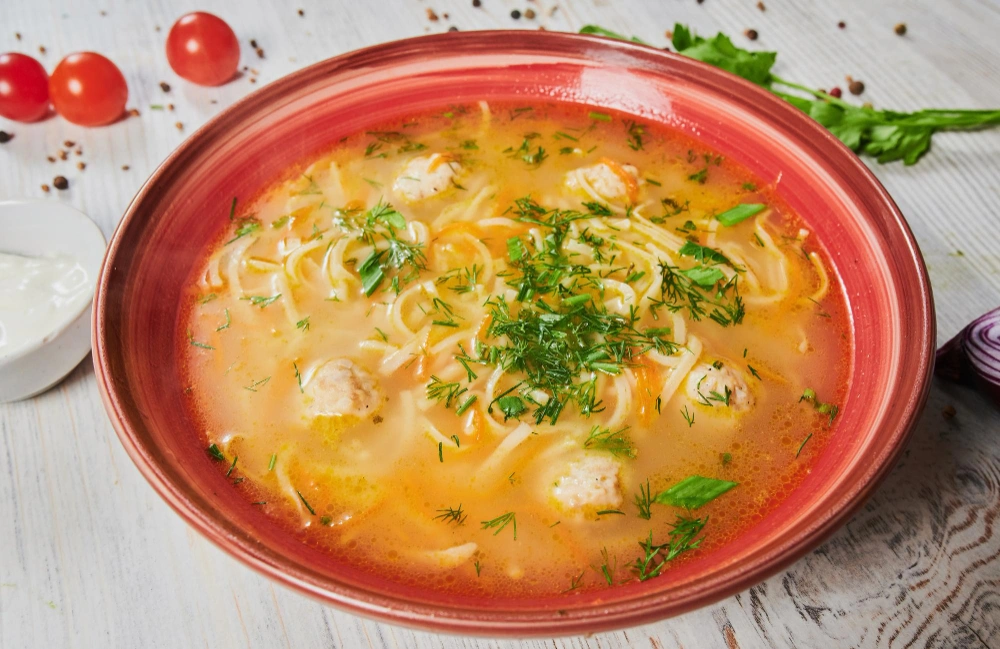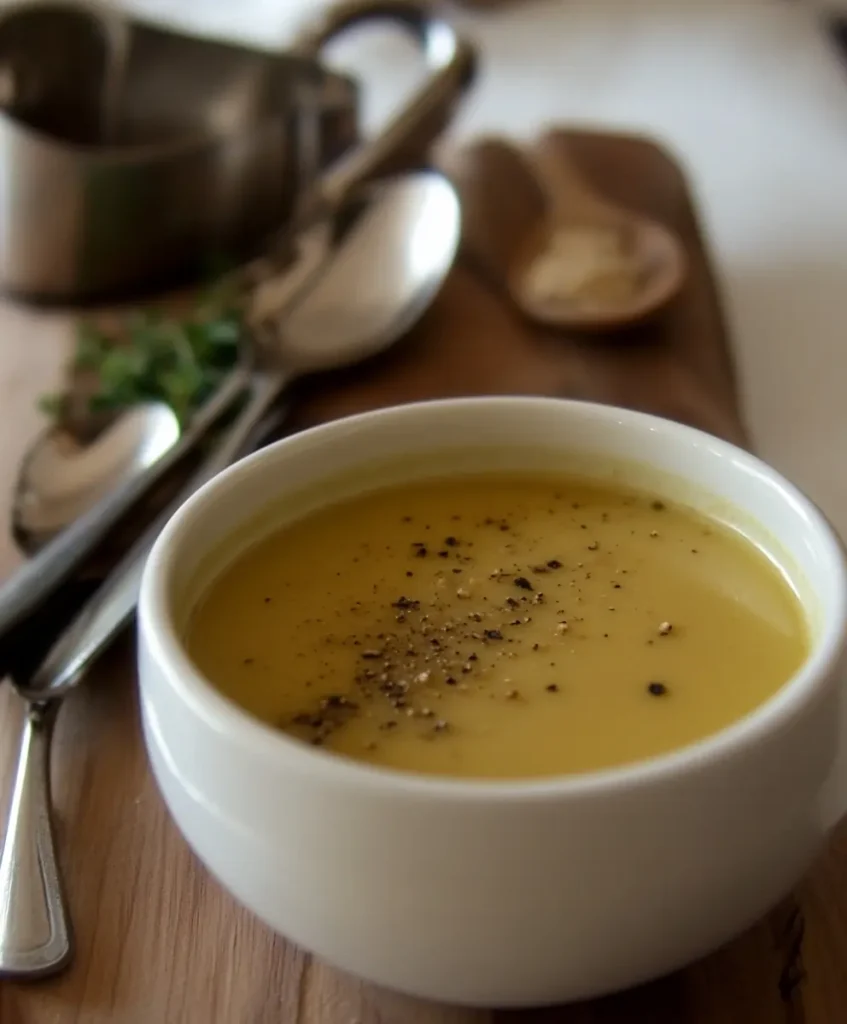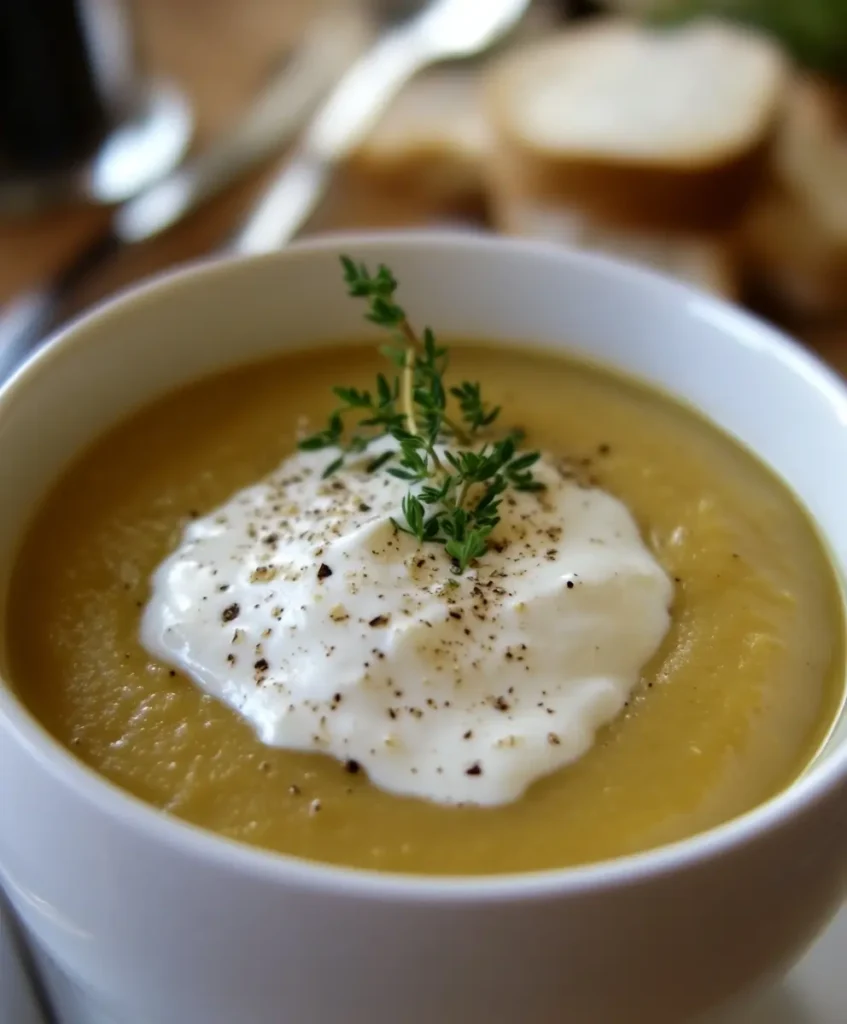What is Mustard Soup?
Mustard soup is a savory dish made primarily using mustard as a key ingredient. This soup can be creamy or broth-based, depending on the recipe you choose. Traditionally, it combines mustard greens or mustard seeds with various vegetables and seasonings, resulting in a rich and hearty flavor profile. Furthermore, mustards soup is often enjoyed as a warm starter or a light meal, offering a unique twist on conventional soup recipes.
In essence, mustard soup showcases the versatility of mustard beyond its typical use as a condiment. It encourages creativity in the kitchen, allowing cooks to experiment with different ingredients while still maintaining that signature mustard flavor. Therefore, this soup is not only delicious but also an excellent way to introduce mustard into your diet.
Nutritional Benefits of Mustard Soup
The nutritional benefits of mustard soup are quite impressive. Mustard greens, which are often used in the preparation of this soup, are packed with essential vitamins and minerals. For instance, they are rich in vitamins A, C, and K, which play crucial roles in maintaining overall health. Additionally, mustard greens contain antioxidants that help combat oxidative stress in the body.
Moreover, mustard seeds, another primary ingredient in mustards soup, are a source of healthy fats, protein, and dietary fiber. These components contribute to better digestion and can promote cardiovascular health. Including mustard soup in your diet can thus provide numerous health benefits while also being a delicious option for mealtime.
- Rich in vitamins A, C, and K
- Contains antioxidants
- Source of healthy fats and protein
- Promotes better digestion
- Supports cardiovascular health

Ingredients for Perfect Mustard Soup
To create the perfect mustard soup, you will need a selection of fresh ingredients. While variations exist, the following components are essential for a basic mustards soup recipe:
- Mustard greens or spinach: The primary leafy ingredient, providing flavor and nutrition.
- Onions: For a savory base, add finely chopped onions to enhance the overall taste.
- Garlic: Minced garlic complements the mustard flavor while adding depth.
- Vegetable or chicken broth: A flavorful liquid base helps to balance the dish.
- Mustard seeds: Ground mustard seeds can be added for an extra kick.
- Cream or coconut milk: Optional for creaminess, depending on dietary preferences.
In addition, spices such as salt, pepper, and herbs can be incorporated to elevate the flavor profile. The combination of these ingredients will result in a delectable mustard soup that is both satisfying and nourishing.
These ingredients combine to create a hearty and satisfying mustard soup recipe.
Step-by-Step Recipe for Mustard Soup
Creating a delicious bowl of mustards soup is straightforward. Follow this step-by-step recipe to enjoy your own homemade version:
- Prepare the Ingredients: Start by washing and chopping the mustard greens or spinach. Additionally, finely chop the onions and mince the garlic.
- Sauté Aromatics: In a large pot, heat some oil over medium heat. Add the chopped onions and garlic, sautéing until soft and fragrant.
- Add Mustard Greens: Stir in the mustard greens or spinach, cooking until wilted.
- Incorporate Broth: Pour in the vegetable or chicken broth, bringing the mixture to a simmer.
- Blend the Soup: Once the greens are tender, use an immersion blender to puree the soup until smooth. Alternatively, transfer to a traditional blender.
- Season: Add ground mustard seeds, salt, and pepper to taste. If desired, stir in cream or coconut milk for added richness.
- Serve: Ladle the soup into bowls, garnishing with fresh herbs or a drizzle of olive oil.
This straightforward recipe allows you to enjoy a warm bowl of mustard soup in no time, providing both comfort and nourishment.
Variations of Mustard Soup
Mustard soup can be customized in numerous ways, allowing for a range of flavors and textures. Here are some popular variations to consider:
- Add Protein: Incorporate cooked chicken, tofu, or beans for a heartier meal.
- Spicy Mustard Soup: Add chili flakes or fresh peppers for a spicy kick.
- Herb-Infused Mustard Soup: Experiment with herbs such as thyme, dill, or parsley for additional flavor.
- Nutty Mustard Soup: Stir in toasted nuts or seeds for added crunch and nutrition.
These variations not only add diversity to your meals but also allow you to tailor the mustard soup to fit your palate and dietary needs.

Mustard Soup Pairings
When serving mustards soup, consider pairing it with complementary dishes to create a well-rounded meal. Here are some ideal accompaniments:
- Crusty Bread: A slice of sourdough or whole-grain bread is perfect for dipping.
- Salads: A light salad with vinaigrette balances the richness of the soup.
- Cheese: Pairing with cheese, such as cheddar or goat cheese, enhances the flavors.
These pairings can elevate your mustard soup experience, making it a delightful centerpiece for any meal.
Mustard Varieties and Their Impact
Different varieties of mustards can significantly impact the flavor of your mustard soup. Here are a few common types:
- Yellow Mustard: Mild and tangy, perfect for a subtle flavor.
- Dijon Mustard: Offers a sharper taste, adding depth to the soup.
- Spicy Brown Mustard: Provides a robust flavor with a hint of heat.
- Whole Grain Mustard: Adds texture and a unique taste experience.
By experimenting with these mustard varieties, you can create a customized mustard soup that reflects your personal taste preferences.
Tips for Storing and Reheating Mustard Soup
Proper storage and reheating techniques are essential for maintaining the quality of your mustards soup. Here are some tips to ensure it stays fresh:
- Storage: Allow the soup to cool completely before transferring it to an airtight container. Store it in the refrigerator for up to three days.
- Freezing: If you want to keep it longer, consider freezing the soup. Use freezer-safe containers and leave space for expansion. It can last for up to three months.
- Reheating: When reheating, do so gently on the stovetop over low heat, stirring frequently. Alternatively, you can use a microwave; just be sure to cover the bowl to prevent splatter.
By following these guidelines, you can enjoy your mustard soup even after a few days.
Mustard Soup for Special Diets
Mustard soup can be easily modified to accommodate various dietary preferences and restrictions. Here are some suggestions:
- Vegan: Replace cream with coconut milk or a nut-based alternative.
- Gluten-Free: Ensure that the broth and any additional ingredients are gluten-free.
- Low-Carb: Skip the cream and focus on the broth and greens for a lighter option.
These adaptations make mustard soup a versatile choice for anyone, regardless of dietary needs.
Common Mistakes When Making Mustard Soup
To achieve the best results with mustard soup, avoid these common pitfalls:
- Overcooking the Greens: Cooking them too long can lead to a mushy texture and loss of vibrant color.
- Not Seasoning Enough: Ensure you taste and adjust the seasoning throughout the cooking process.
- Skipping the Blending Step: For a creamy texture, blending is crucial. Skip this step for a chunkier soup, but keep in mind that it may alter the overall consistency.
By being mindful of these mistakes, you can create a delicious mustard soup that impresses your family and friends.
Mustard Soup as Comfort Food
Mustard soup serves as a comforting dish, particularly during colder months. Its warm, hearty nature makes it a perfect choice for cozy evenings. The simplicity of the recipe allows for quick preparation, making it an excellent option for weeknight dinners.
Additionally, the rich flavor of mustard soup can evoke feelings of nostalgia, reminding many of family meals enjoyed during childhood. As a result, it becomes more than just a dish; it transforms into a source of comfort and warmth.

Expert Tips for the Perfect Mustard Soup
To achieve the ultimate mustard soup, consider these expert tips:
- Choose Fresh Ingredients: Fresh mustard greens and high-quality broth will significantly enhance the flavor.
- Experiment with Spices: Don’t hesitate to try different spices to create a unique flavor profile.
- Adjust Consistency: If the soup is too thick, add more broth or water to reach your desired consistency.
Implementing these tips can elevate your mustard soup from good to exceptional, making it a standout dish in your culinary repertoire.
FAQ’s
What is mustard sauce used for?
Mustard sauce is a versatile condiment that can enhance a variety of dishes. It is commonly used as a dipping sauce for meats, such as chicken, and can also serve as a flavorful dressing for salads.
Additionally, mustard sauce can be incorporated into marinades, providing a tangy kick to grilled or roasted vegetables. Its creamy texture and sharp flavor make it an excellent accompaniment for sandwiches and wraps, adding depth to the overall taste. Overall, mustard sauce is a quick and easy way to elevate the flavor of many meals.
Why is mustard so tasty?
Mustard is considered tasty due to its unique combination of flavors and textures. The primary ingredient, mustard seeds, contains compounds that release a pungent and tangy flavor when ground and mixed with liquids. This sharpness is balanced by the acidity of vinegar, which enhances the overall taste profile.
Additionally, mustard can be blended with other ingredients, such as honey or herbs, to create a range of flavors from sweet to spicy. This versatility allows mustard to complement various dishes, making it a popular choice among many food enthusiasts.
How to thicken mustard sauce?
To thicken mustard sauce, there are several effective methods you can use. One common approach is to create a roux by cooking equal parts of butter and flour together before adding the mustard and other liquids. This will create a smooth, thickened sauce.
Alternatively, you can incorporate cornstarch or arrowroot powder mixed with a small amount of cold water, then stir this mixture into the sauce while it simmers. Another option is to reduce the sauce by simmering it over low heat, allowing excess liquid to evaporate and naturally thickening the sauce.
Is mustard healthy?
Yes, mustard is generally considered a healthy condiment. It is low in calories and contains no fat, making it a suitable choice for those looking to maintain a healthy diet. Mustard is also rich in antioxidants and contains essential nutrients, such as selenium, magnesium, and omega-3 fatty acids.
Additionally, mustard seeds have anti-inflammatory properties and may aid in digestion. However, it is essential to be mindful of added sugars and sodium in some prepared mustard products, as these can impact overall health.
What flavor does mustard add?
Mustard adds a distinct tangy and sharp flavor to dishes, which can enhance the overall taste experience. The level of heat and pungency can vary depending on the type of mustard used, ranging from the mildness of yellow mustard to the spiciness of Dijon or whole grain mustard.
This unique flavor profile makes mustard an excellent complement to meats, sandwiches, and salads, as it cuts through richness and adds brightness to the dish. Furthermore, mustard can be combined with other ingredients to create complex flavor combinations, making it a versatile addition to many recipes.
Is mustard the healthiest sauce?
While mustard is a healthy condiment option, whether it is the healthiest sauce depends on individual dietary needs and preferences. Mustard is low in calories and fat, and it provides beneficial nutrients and antioxidants.
However, other sauces, such as salsa or certain vinaigrettes, may also offer health benefits depending on their ingredients. Ultimately, mustard can be considered one of the healthier sauce options, especially when compared to creamy or sugary sauces. It is essential to choose varieties with minimal additives and to use it in moderation as part of a balanced diet.
Conclusion
In conclusion, Mustard soup is more than a warm, tangy delight—it’s a celebration of flavor and nutrition. With its versatility and ease of preparation, it’s an excellent addition to any meal plan. Whether you enjoy it as a starter, a light lunch, or a comforting dinner, mustard soup is sure to become a favorite.



3 thoughts on “Mustard Soup: Recipes, Benefits, and Tips Inside!”